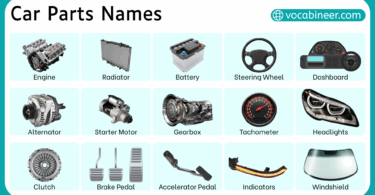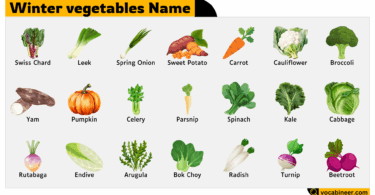Water transport means moving people or goods using vehicles that travel on water, such as rivers, seas, or oceans. It is one of the oldest and most reliable methods of transport. In this post, you will learn the complete Water Transport Names List with Pictures, designed for students and beginners. This includes boats, ships, ferries, and more — covering all common water vehicles, traditional and modern. Understand key terms, improve transport vocabulary, and master basic marine transport concepts with ease.
In This Page
Types of Water Transport with Examples and Pictures
There are two main types of water transport: inland and ocean transport. Each type includes several kinds of water vehicles.
Inland Water Transport
This type of transport takes place in rivers, canals, and lakes. It is mostly used for short-distance travel and moving goods within a country.
Examples of inland water transport:
- Rowboat — small boat rowed with oars
- Canoe — narrow boat paddled manually
- Kayak — single-person small boat with a double-bladed paddle
- Ferry — used to carry people and vehicles across rivers
- Barge — flat-bottomed boat used for transporting goods
- Houseboat — floating home used in rivers or lakes
- Paddle steamer — steam-powered boat for inland tourism
Ocean Water Transport
This type of transport happens in seas and oceans and is used for international travel or large-scale shipping.
Examples of ocean water transport:
- Cargo ship — carries containers and goods across oceans
- Cruise ship — used for passenger travel and tourism
- Oil tanker — transports liquid oil and petroleum
- Fishing vessel — used for catching fish in deep waters
- Naval ship — military ship for defense and patrol
- Yacht — luxury boat for personal or recreational use
- Submarine — underwater naval vessel
- Container ship — carries cargo in containers over long distances
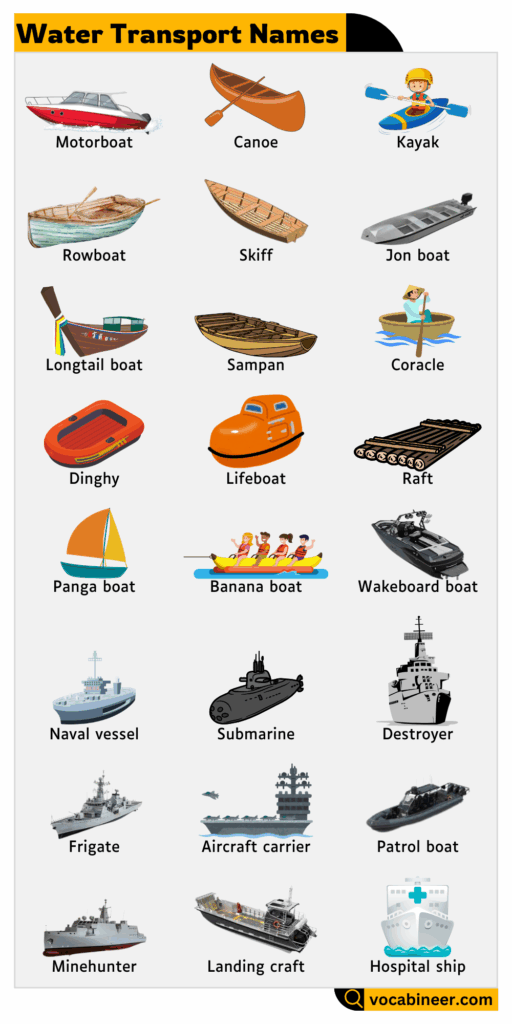
A to Z Water Transport Vehicles Name List
Below is a list of water transport vehicles in alphabetical order, with brief descriptions:
- Barge — flat boat for cargo
- Boat — general term for small watercraft
- Canoe — manually paddled narrow boat
- Cargo ship — vessel for transporting goods
- Catamaran — double-hulled boat
- Cruise ship — large passenger ship for tourism
- Dinghy — small inflatable or wooden boat
- Ferry — transports people and vehicles
- Fishing boat — used for catching fish
- Freighter — carries bulk goods
- Hovercraft — glides on water and land using air cushion
- Houseboat — floating home
- Jet ski — personal watercraft for fun
- Kayak — small personal paddling boat
- Motorboat — powered by an engine
- Oil tanker — carries oil across seas
- Raft — flat floating structure
- Rowboat — moved with oars
- Sailboat — moves using sails and wind
- Ship — large vessel for passengers or goods
- Speedboat — fast motor-powered boat
- Submarine — underwater vehicle
- Tugboat — used to tow larger vessels
- Yacht — private luxury boat
Common Water Transport Names for Kids with Images
For beginner learners, here are simple and commonly known water transport names:
- Ship
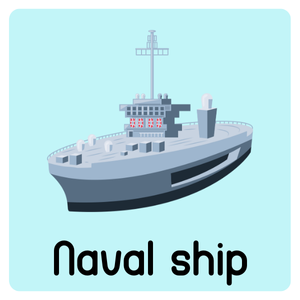
- Canoe
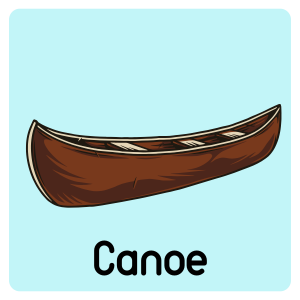
- Kayak
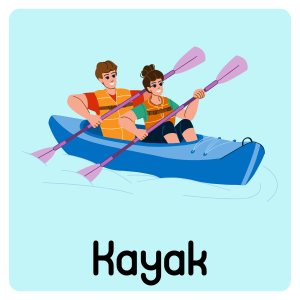
- Yacht
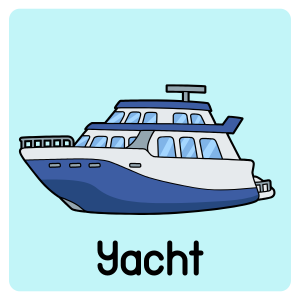
- Ferry
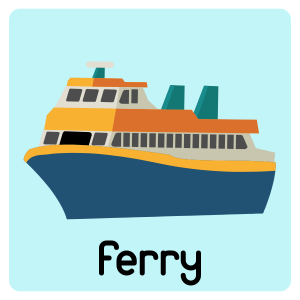
- Sailboat
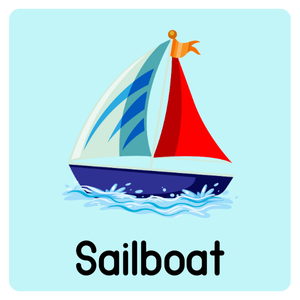
- Submarine
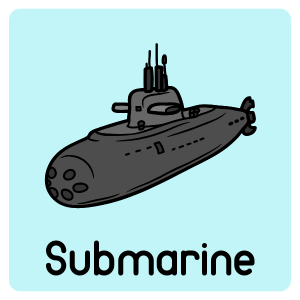
- Speedboat
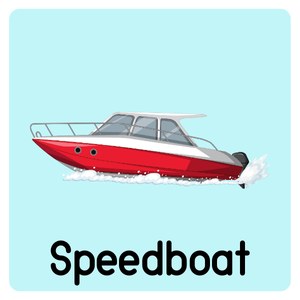
- Cargo Ship
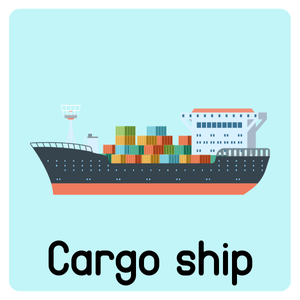
- Cruise Ship
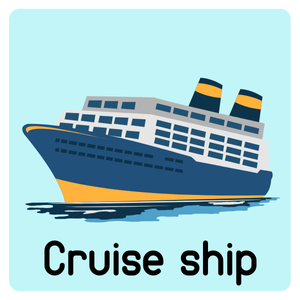
- Fishing Boat
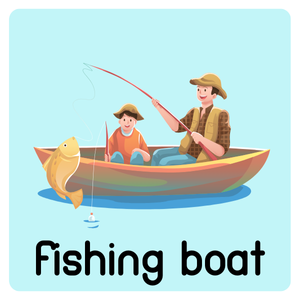
- Container ship
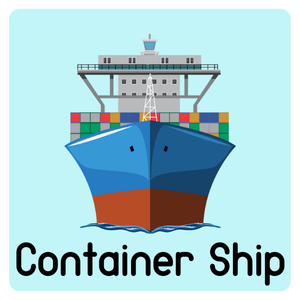
- Hovercraft
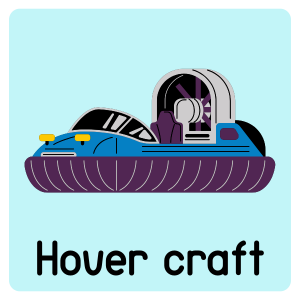
- Raft
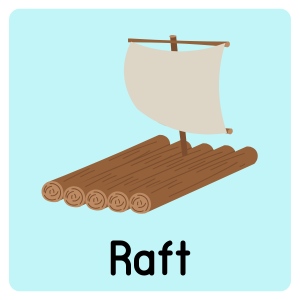
- Tugboat
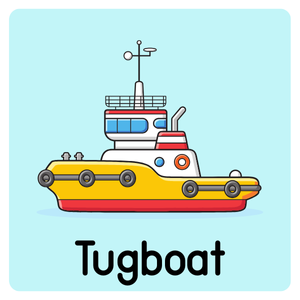
- Oil tanker
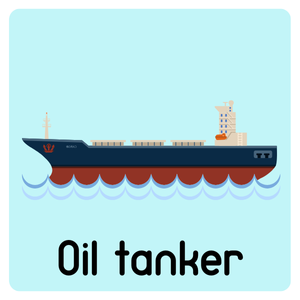
- Jet ski
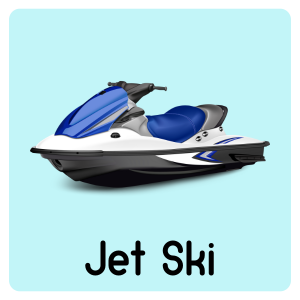
- Houseboat
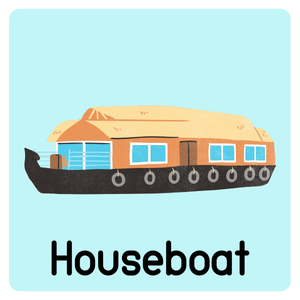
- Rowboat
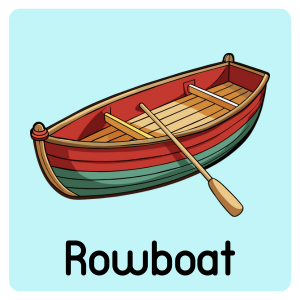
- Barge
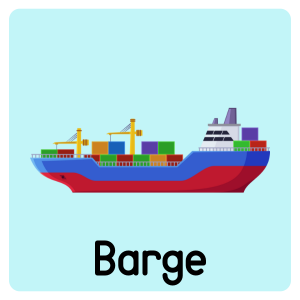
These names are easy to understand and often seen in books, cartoons, or school lessons.
Traditional vs Modern Water Transport Names
Traditional water transport includes older types of boats used in the past. Modern water transport uses advanced technology and is faster and more efficient.
Traditional Water Transport Examples:
- Sailboat
- Canoe
- Rowboat
- Raft
- Paddle steamer
Modern Water Transport Examples:
- Cargo ship
- Oil tanker
- Cruise ship
- Jet ski
- Hovercraft
Top 10 Water Transport Examples Used Today
Here are commonly used water vehicles in the modern world:
- Cargo ship
- Oil tanker
- Cruise ship
- Fishing boat
- Submarine
- Ferry
- Container ship
- Speedboat
- Yacht
- Tugboat
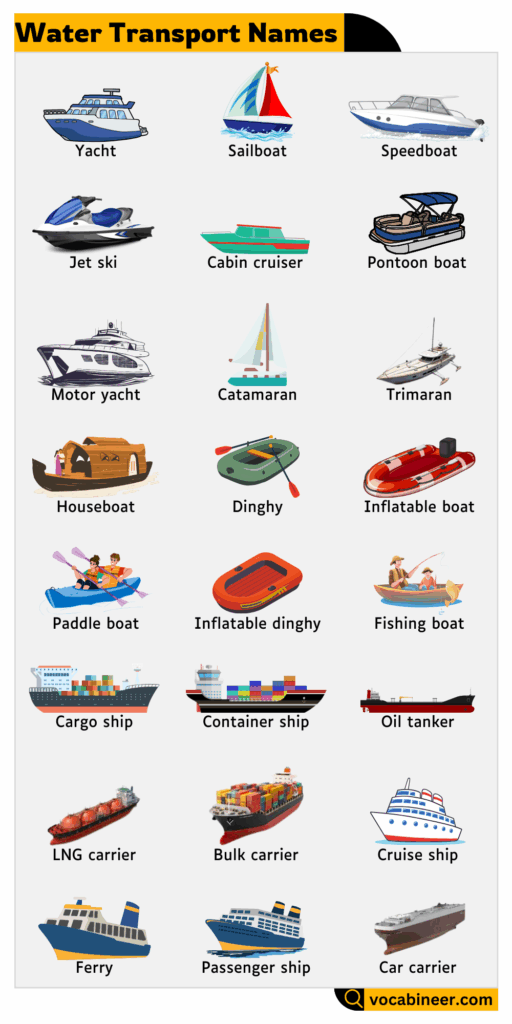
Importance and Uses of Water Transport in Daily Life
Water transport plays an important role in trade, travel, and the economy. It helps in:
- Moving heavy goods across long distances
- Connecting islands and coastal cities
- Providing jobs in fishing, shipping, and tourism
- Supporting emergency and military operations
Advantages and Disadvantages of Water Transport
Advantages:
- Cost-effective for bulk transport
- Good for international trade
- Environment-friendly compared to air transport
- Can carry large and heavy cargo
Disadvantages:
- Slower than air or road transport
- Affected by weather and tides
- Limited to areas with waterways
- High port and docking costs
Water Transport Vocabulary Words with Meanings
Below is a list of vocabulary words related to water transport:
- Deck — flat surface of a ship
- Dock — place where ships are loaded or unloaded
- Harbor — safe area for ships to anchor
- Hull — main body of a ship
- Anchor — heavy object dropped to keep a ship in place
- Port — town or city with a harbor
- Sail — cloth used to catch wind for movement
- Oar — stick used for rowing
- Bow — front part of a ship
- Stern — back part of a ship
- Buoy — floating object that marks water areas
- Crew — people working on a ship
- Captain — person in charge of a ship
- Bridge — area from where the ship is controlled
- Cabin — room inside a ship
- Lifeboat — small boat used in emergencies
- Marina — small harbor for boats
- Propeller — rotating blades that move the boat
- Engine — machine that powers the ship
- Compass — tool for direction
Conclusion
Water transport is a key part of our global system. From simple rowboats to giant cargo ships, each vehicle has its own use and importance. Understanding these names helps learners build strong vocabulary and awareness about the world of transport.
FAQs About Water Transport
Water transport means moving people or goods using vehicles like boats or ships through rivers, lakes, or oceans.
Five examples are boat, ship, canoe, ferry, and submarine.
It helps carry heavy goods over long distances and is cheaper than many other transport types.
Big cargo ships or container ships are used to carry goods across oceans.
A small boat is often called a dinghy, canoe, or raft.
Read More


